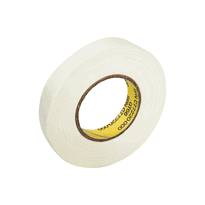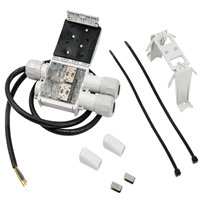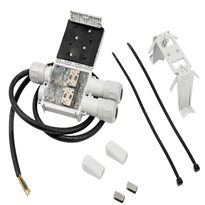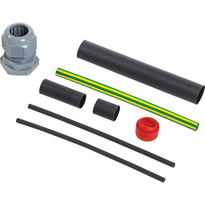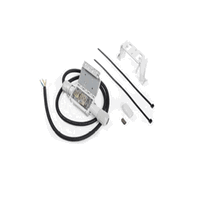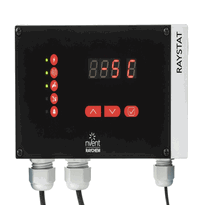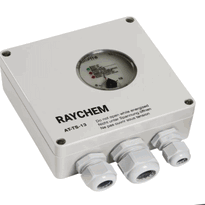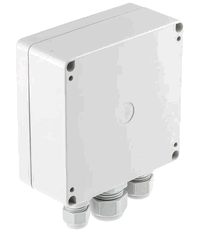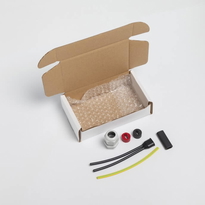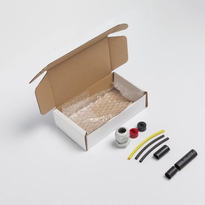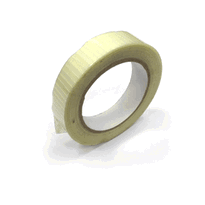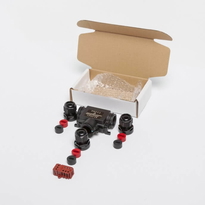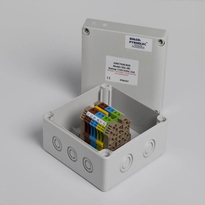Electrical Tracing Tape
Electrical tracing tapes are specialised materials employed to maintain or monitor the temperature of pipes and equipment, which is vital in various industrial settings. They are available in different types, including self-regulating, constant wattage, and high-temperature tapes, crafted from materials such as polymers, graphite, or PTFE. Each type offers distinct advantages in ensuring thermal stability and safety.
Proper installation is crucial for optimal performance. This involves thorough surface preparation to ensure adhesion, secure fixing of the tape, and strict adherence to the manufacturer’s guidelines. Regular inspection and maintenance are essential to identify and rectify potential issues, thereby extending the lifespan of the tracing system.
Adherence to safety standards remains a top priority to protect personnel and equipment. Continuous attention to detail and operational best practices help maximise system efficiency and safety. Exploring these aspects in depth enhances effective system management and contributes to the reliable functioning of industrial processes.
Types and Material Composition of Electrical Tracing Tapes
Electrical tracing tapes are classified into several types, each designed to meet particular application requirements. Their material compositions are carefully selected to optimise performance and durability. Material selection directly influences their thermal stability, electrical properties, and mechanical resilience, ensuring that each type performs effectively in its designated environment. Self-regulating heat tracing tapes adjust their resistance according to temperature, reducing heat output once the set point is reached. This feature enhances energy efficiency and safety, making them suitable for a range of industrial and commercial applications. They are often constructed with polymer-based materials that provide both electrical insulation and flexibility, essential for installation on complex geometries. Constant wattage tapes deliver a uniform heat output regardless of environmental fluctuations. This consistency makes them ideal for applications requiring stable temperature control, such as pipe freeze protection and process temperature maintenance. Electrical insulation tapes primarily serve to protect wires from mechanical damage and environmental factors. These tapes are typically made from materials like PVC or rubber, designed for electrical safety rather than heat generation. PTFE tapes, composed of polytetrafluoroethylene, offer exceptional chemical and thermal resistance. They're utilised in high-performance environments where durability against harsh substances and extreme temperatures is essential. Specialised tapes intended for high-temperature applications are engineered from robust materials such as graphite or PTFE. These ensure they withstand extreme conditions without compromising their functionality. Each type’s material composition is tailored to its specific operational demands, thereby ensuring reliability across diverse industrial settings.
Installation Techniques and Best Practices
Installation Techniques and Best Practices for Electrical Tracing Tapes
Proper installation of electrical tracing tapes requires a systematic approach beginning with comprehensive pre-installation procedures. Surface preparation is crucial; this involves cleaning pipes thoroughly to remove dirt, rust, and grease using suitable solvents. Ensuring the surface is free of debris facilitates secure attachment of the tape. Heat trace cables require proper surface cleaning for optimal adhesion and performance. Before installation, confirm that piping or equipment has undergone pressure testing and inspection. Follow this with a visual inspection of the cables to check for any shipping damage. Additionally, perform insulation resistance tests at voltages between 20 and 2,500 volts DC to ensure the integrity of the cables. Validating the components is essential to guarantee the correct cable type and voltage rating are used for the application. During installation, cables should be positioned at specified angles, and securement should occur at regular intervals of between 15 and 30 centimetres (6–12 inches). Extra protective measures, such as aluminium foil tape or additional layers around fittings, can enhance durability and performance. Accurately calculating the circuit length and adhering closely to the manufacturer’s diagrams and instructions ensures optimal system functionality. Proper cable securing and thermal bridging not only maximises efficiency but also ensures compliance with safety standards and prolongs the lifespan of the electrical system.
Safety Standards and Regulatory Compliance
Ensuring safety and regulatory compliance in electrical tracing systems within the UK requires strict adherence to a comprehensive set of standards and regulations established by authoritative organisations. These include national and industry-specific codes such as the British Standards (BS), the UK’s wiring regulations (BS 7671), and applicable standards from organisations like the Institute of Electrical and Electronics Engineers (IEEE) and Underwriters Laboratories (UL). These regulations specify material qualities, system design features, and testing procedures essential for safe operation.
Materials used in electrical tracing systems must be self-regulating, capable of passing dielectric tests, and designed with safety features such as lock-out provisions to prevent accidental energisation. The choice of insulating and protective materials should conform to recognised standards, ensuring durability and safety under operational conditions.
Grounding requirements are also critical. They mandate continuous metal sheaths or covers for protective earth connections, minimising the risk of electric shock hazards or electrical faults. Proper grounding not only ensures personnel safety but also facilitates system reliability and fault detection.
Compliance extends to installation standards laid out by organisations such as the National Electrical Manufacturers Association (NEMA), the Canadian Standards Association (CSA), and the American National Standards Institute (ANSI). These standards include comprehensive stipulations on system installation, testing, and maintenance, as well as the necessary safety documentation and certification.
Furthermore, all installations must be accompanied by appropriate labelling and warning tape application to clearly communicate hazards and safety information. Adhering to these standards helps ensure that electrical tracing systems operate within safe limits and minimise the risk of accidents or failures.
Additionally, ongoing compliance requires regular inspections and recordkeeping to verify that systems remain within the scope of approved standards over their operational lifespan.
Maintenance, Repair, and Cost Considerations
Regular maintenance of heat tracing systems is vital to identify and address potential problems before they develop into more serious issues or result in system failure. Routine inspections, including visual checks of splices, terminations, and cables, help detect damage or deterioration early, ensuring continued efficiency and safety. [Proper monitoring allows for early detection of insulation degradation such as moisture ingress, preventing system inefficiencies. It is important to verify that ground-fault protection devices are fully operational to maintain safety standards. The use of thermostatic controls can enhance energy efficiency by preventing unnecessary operation. Sealing insulation around fittings is also crucial to prevent moisture ingress, which can compromise system performance and longevity. Implementing insulation best practices can also reduce the risk of external damage and extend the insulation’s lifespan.
Repairs may involve replacing damaged insulation or cables, inspecting expansion joints, and conducting comprehensive system tests following any maintenance work. These proactive measures can reduce the likelihood of unexpected breakdowns.
From a financial perspective, consideration should be given to initial installation costs, ongoing maintenance and repair expenses, and the potential costs associated with system downtime. Proper maintenance and prompt repairs not only extend the lifespan of the system but also minimise energy waste and improve operational efficiency.
Consequently, these practices lead to long-term cost savings, greater system reliability, and reduced operational disruption.
Conclusion
Proper selection, installation, and maintenance of electrical tracing tapes are vital for ensuring safe, efficient, and compliant pipeline temperature control within the UK. Familiarity with various types and materials, adherence to best practices, and compliance with safety standards are key to minimising operational risks and reducing long-term costs. Regular inspection and prompt repairs help sustain optimal system performance and ensure ongoing regulatory compliance. Applying these principles guarantees reliable operation, extends equipment lifespan, and maintains safety across diverse industrial and commercial applications.








